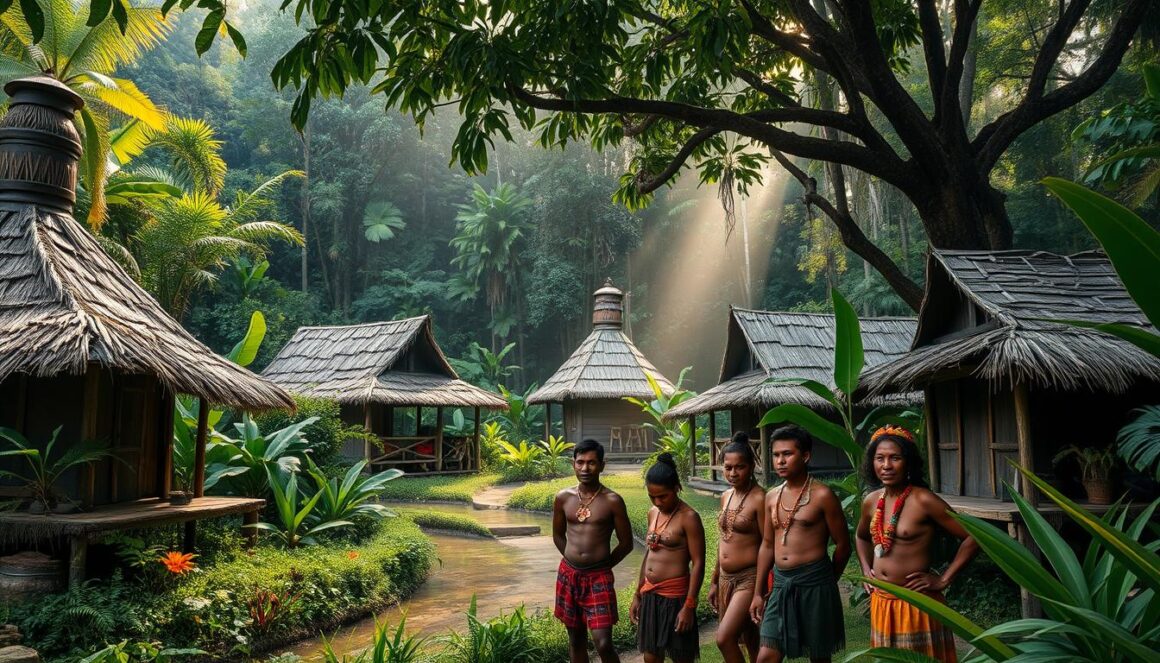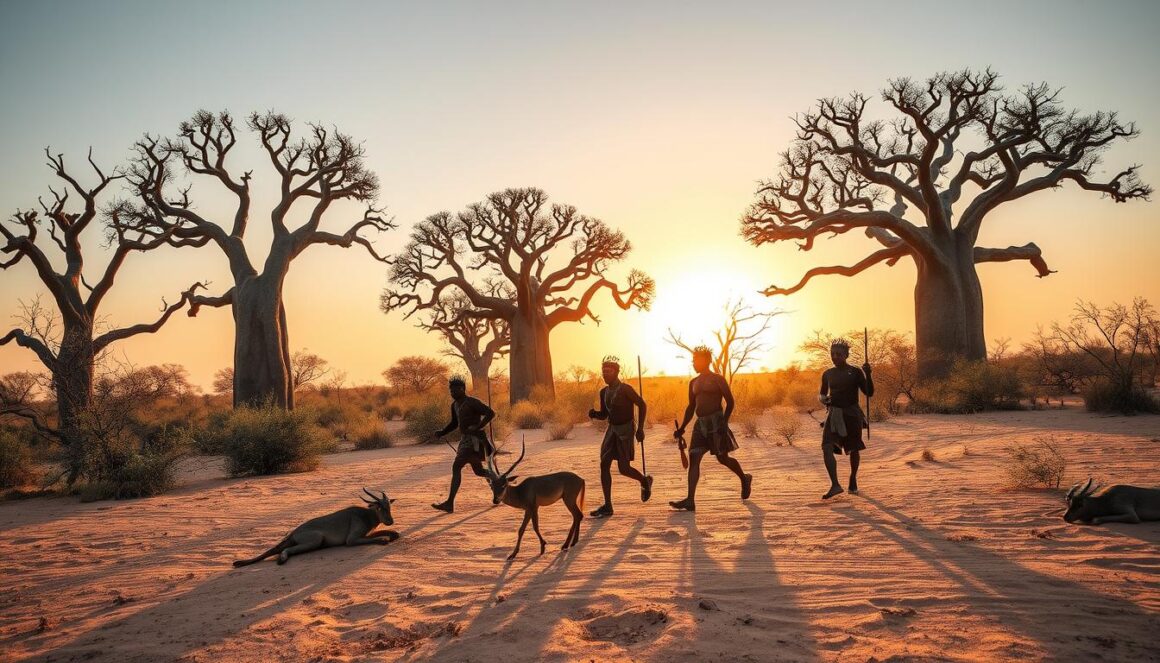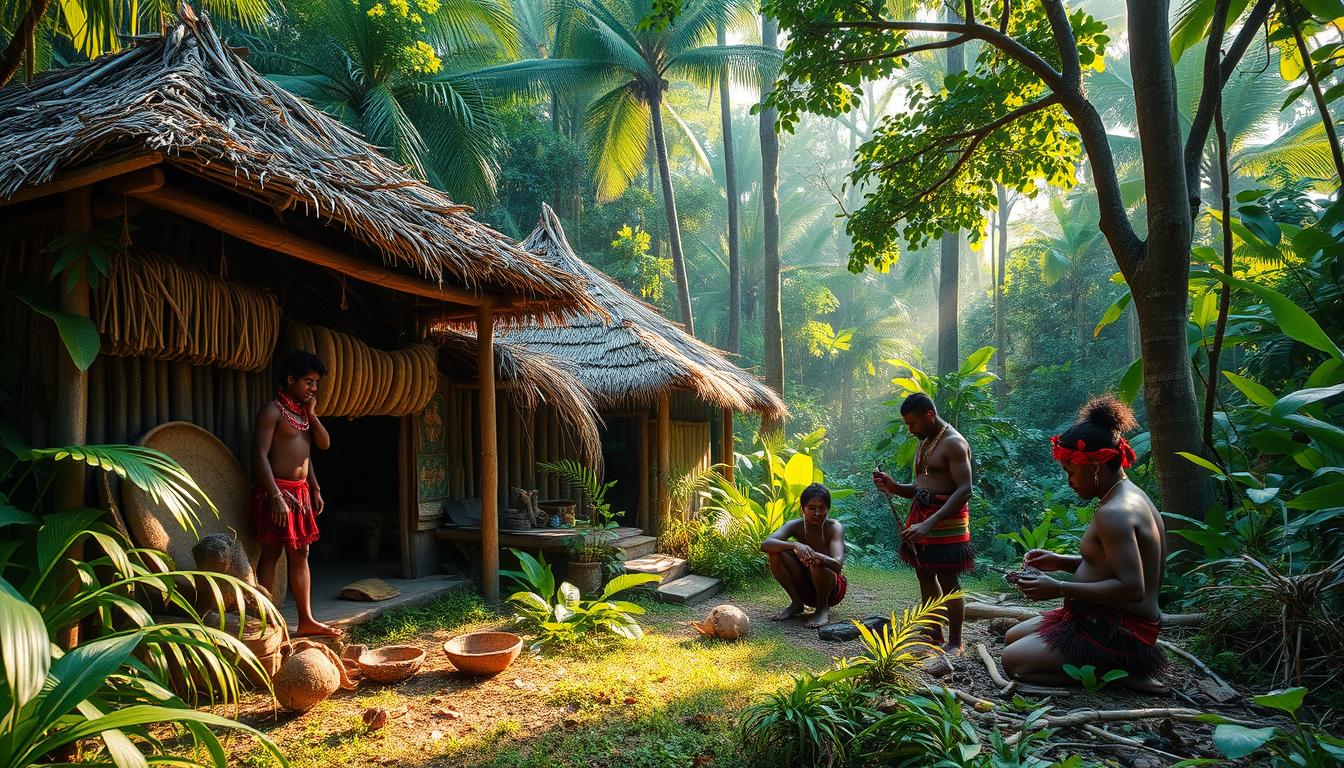There are between 100 and 200 uncontacted tribes worldwide, with up to 10,000 people. Most live in the Amazon rainforest of South America. They choose to stay away from the modern world, keeping their traditional ways alive. Their survival shows how strong and flexible human cultures can be, even with fast global changes.
Uncontacted tribes, also known as isolated or indigenous peoples, live without contact with others. They are found in hard-to-reach places, keeping their old lifestyles, languages, and customs alive. It’s very important to protect their lands, environments, and right to stay isolated. Contact with the modern world can be very harmful, like spreading diseases and exploitation.
Key Takeaways
- An estimated 100 to 200 uncontacted tribes exist worldwide, with a total population of up to 10,000 individuals.
- The majority of uncontacted tribes reside in the Amazon rainforest of South America, particularly in Brazil.
- Uncontacted tribes are defined as indigenous groups living without sustained contact with neighboring communities and the outside world.
- Protecting the lands, environments, and right to no contact for these tribes is a critical priority to prevent the spread of disease and exploitation.
- International organizations emphasize the importance of preserving the traditional ways of life and cultural practices of uncontacted tribes.
The Sentinelese: Isolation in the Andaman
The Sentinelese tribe lives on North Sentinel Island in the Bay of Bengal. They are the most isolated community in the world. They have kept their independence by rejecting outside contact and using force to protect their land.
Their language is very different from other Andamanese tribes. This shows they have been isolated for thousands of years.
It’s hard to know how many Sentinelese there are. Estimates range from 15 to 500 people. The 2011 census found only 15 people. They live on an island the size of Manhattan.
They hunt, gather, and fish to survive. They use bows, arrows, and spears for hunting.
The Indian government protects the Sentinelese’s island. They keep a 3 nautical mile buffer zone to stop unauthorized visits. This isolation has been costly for other Indigenous groups.
Groups like the Onge and Great Andamanese have seen their numbers drop after meeting outsiders. But the Sentinelese want to keep their traditional life. They reject all contact and fight to keep their freedom.
The Yanomami: Guardians of the Amazon

Deep in the Amazon rainforest, a resilient people have lived for thousands of years. The Yanomami, one of South America’s largest indigenous groups, protect this precious ecosystem. Their way of life, based on respect for nature, allows them to live in harmony with their surroundings.
The Yanomami live in Brazil and Venezuela, covering nearly 96,650 square kilometers. Their communities, with 50 to 400 people, understand the Amazon’s complex ecosystems well. They grow up to 75% of their food, showing their deep connection to the land.
But, their traditional life is under threat. Illegal gold mining, deforestation, and diseases from outsiders harm their communities. In the 1980s, 30,000 to 40,000 gold miners invaded their lands, outnumbering them five to one. The Brazilian government has set aside protected areas, but their resources are still exploited.
Despite these challenges, the Yanomami remain the Amazon’s guardians. Their knowledge of the forest’s plants and animals is crucial for our understanding of it. As we face climate change and environmental damage, preserving their traditions and role in the Amazon is more important than ever.
The Maasai: Vibrant Culture of East Africa
The Maasai tribe is a symbol of resilience and tradition in East Africa. They live in Kenya and Tanzania, keeping their customs and vibrant attire alive. Despite modernization, they hold on to their traditional lifestyle.
The Maasai are known for herding cattle and their warrior traditions. There are about 1.2 million Maasai in Kenya and 2 million in Tanzania. They live near big national parks like the Serengeti and Masai Mara.
The Maasai face challenges like land rights and economic changes. Yet, they keep their traditional way of life. They herd cattle and live in harmony with nature. Their language, ‘Maa,’ and cultural traditions, like the Adumu dance, are key to their identity.
The Maasai remind us of the lasting power of East African culture. They show us the importance of keeping traditions alive and living with nature.
The San People: Ancestral Hunters of Kalahari

In the dry Kalahari Desert of southern Africa, the San people have lived for over 20,000 years. They are one of the oldest hunter-gatherer societies. They know a lot about their environment, like plants and animals.
But, their traditional life is facing big challenges today.
Namibia has about 71,201 San people, and Botswana has around 63,500. This makes up 2.8% of Botswana’s population. South Africa, Angola, and Zimbabwe also have San communities. There are about 7,000 in South Africa, 16,000 in Angola, and 1,200 in Zimbabwe.
The San speak languages from the Khoe, Tuu, and Kxʼa families. These languages have unique click sounds.
The San live in a way that values equality. They share things like meat and tobacco. They hunt using bows, arrows, traps, and even clubs.
They know how to survive in the harsh desert. They find water in roots and dig in the sand.
But, their lands are being taken over by modern development. This threatens their way of life. It’s important to save their culture and knowledge.
The Huli Wigmen: Colorful Traditions of Papua New Guinea
In the remote highlands of Papua New Guinea, the Huli Wigmen thrive. They are known for their elaborate headdresses made from their own hair. These headdresses are decorated with feathers and flowers.
The Huli tribe is the largest in Papua New Guinea, with about 400,000 people. They live in harmony with the land, following rituals passed down through generations. Men hunt using knives, spears, and bows, with few guns.
The Huli Wigmen’s wigs are their most striking feature. Boys start making their wigs at 14, staying for 18 months. These wigs are very important, with families paying pigs or money for them.
The Huli Wigmen are also famous for their vibrant dances and body decorations. Women wear long grass skirts and a smock, while men have their iconic wigs. Both carry string bags called bilum, often with babies inside.
Despite their isolation, the Huli Wigmen face challenges. Fewer young men are becoming wigmen, threatening their tradition. Yet, their determination to keep their culture alive shows the strength of cultural traditions.
The Challenges Threatening Traditional Tribal Life
Traditional tribal communities worldwide face many challenges. These threats harm their culture and way of life. Deforestation, resource exploitation, and land loss by outsiders have hurt many indigenous groups. These actions disrupt their balance with nature.
Diseases from outsiders are a big threat. Isolated tribes often can’t fight off common illnesses. This has led to epidemics that have killed many people.
In Peru, the Nahua tribe lost over 50% of its members to diseases from oil exploration. In Brazil, the Zo’é lost 45 people to flu, malaria, and respiratory ailments after meeting missionaries.
Trying to modernize tribal areas also poses risks. Roads and dams have caused great harm. For example, the Panará in Brazil lost over 80% of their tribe due to a highway.
The Jarawa of the Andaman Islands have faced sexual exploitation and threats to their safety. A highway through their land has been a major problem. Protecting tribal rights and respecting their self-determination is crucial.




